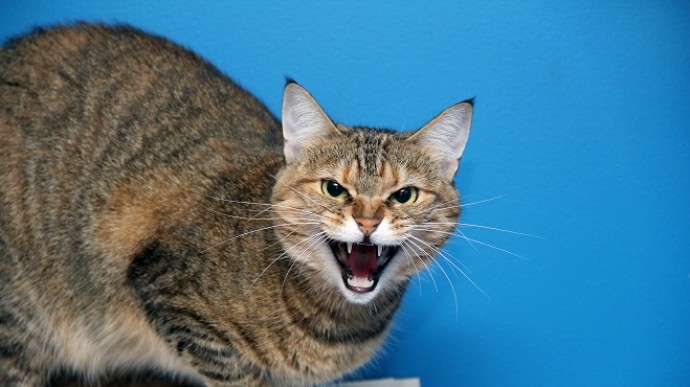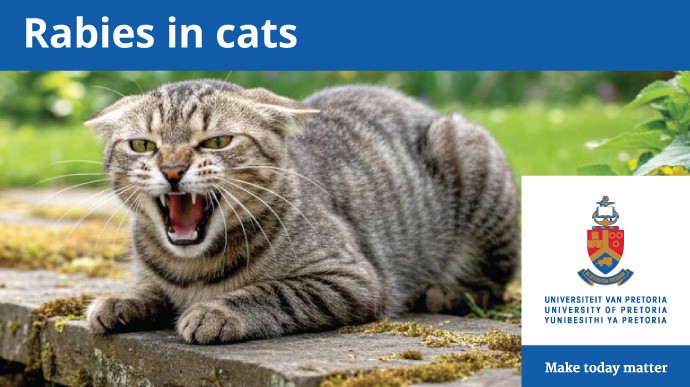
Professor Claude Sabeta obtained a BSc (Hons) in Biochemistry and an MPhil in Molecular Genetics from the University of Zimbabwe (Harare), and completed his PhD in Microbiology at the University of Pretoria (UP) in 2002.
After completing his MPhil degree, Prof Sabeta worked at the Blair Research Institute in Harare, Zimbabwe, in the Department of Infectious Diseases. He later joined the University of Zimbabwe, lecturing both undergraduate and postgraduate students in cell biology, microbiology and genetics. He was appointed as a senior research scientist and Head of the World Organisation for Animal Health Rabies Reference Laboratory at the Agricultural Research Council of the Onderstepoort Veterinary Institute. He joined UP as an extraordinary lecturer in 2005 and was permanently appointed in January 2022.
He works on rabies epidemiology, and develops methods for improved diagnosis and surveillance of the rabies virus. In UP’s Faculty of Veterinary Science, he collaborates with Dr Sarah Clift to assess ante-mortem methods for rabies diagnosis in dog populations. Prof Sabeta is doing research at UP because it “is aligned with institutional, national mandates for rabies epidemiology and the Sustainable Development Goals”. His research benefits the world because it contributes to the generation of targeted strategies for rabies control, and consequently improves the quality of life and health of human populations.
A recent research highlight has been his and Dr Clift’s demonstration of the routes of introduction and subsequent spread of rabies into dog populations in the Nelson Mandela Bay Metro, and the pivotal role of public-private partnerships in the successful control of this rabies outbreak.
Prof Sabeta’s research was inspired by US scholar Dr Charles Rupprecht and his deep understanding of rabies. His academic role model is Prof Louis Nel of UP’s Faculty of Natural and Agricultural Sciences, who introduced him to the field of virology and specifically rabies.
Prof Sabeta hopes his research will provide more practical solutions to rabies diagnoses and better surveillance of the disease. His research matters, he says, because, with other contributors, it contributes to the understanding of the transmission dynamics of rabies between wildlife, domestic animals and humans; this understanding is crucial to break the transmission cycles and ultimately eliminate the disease.
As for advice to school learners and undergraduate students who are interested in infectious diseases in animals, he has this to say: “You will need to gain a good understanding of the pathogen and its patterns of infection in different host species. Such an understanding is crucial and can contribute to disease control. One can also pursue studies in veterinary or medical sciences, then specialise in infectious diseases; this is against the backdrop that some aspects of human and animal pathogens, such as rabies, are interlinked.”
In his free time, Prof Sabeta enjoys travelling and photography.
 Story
Story
Many associate human rabies infections with infected domestic dogs. Yet, like most mammals, cats can also pass this deadly viral disease on to people. That is why pet owners should ensure that their feline pets receive regular rabies vaccinations, according to Professor Claude Sabeta of the Department of Veterinary Tropical Diseases in the Faculty of Veterinary Science at the University of...
 Infographic
Infographic
Infected cats excrete the rabies virus in their saliva for several days before symptoms kick in. A bite or scratch from a cat can leave deep puncture wounds, through which the virus can enter a person’s bloodstream. Learn more about other possible symptoms of rabies in cats and what to do if you suspect your cat may be infected.
 Story
Story
Rabies predominantly affects marginalised populations. Although effective human vaccines and immunoglobulins exist, the immunoglobulins are often inaccessible or unaffordable to those in need. An international drive to develop alternative post-exposure prophylaxis (PEP) biological alternatives, led by the World Health Organisation, is underway.
Copyright © University of Pretoria 2025. All rights reserved.
Get Social With Us
Download the UP Mobile App